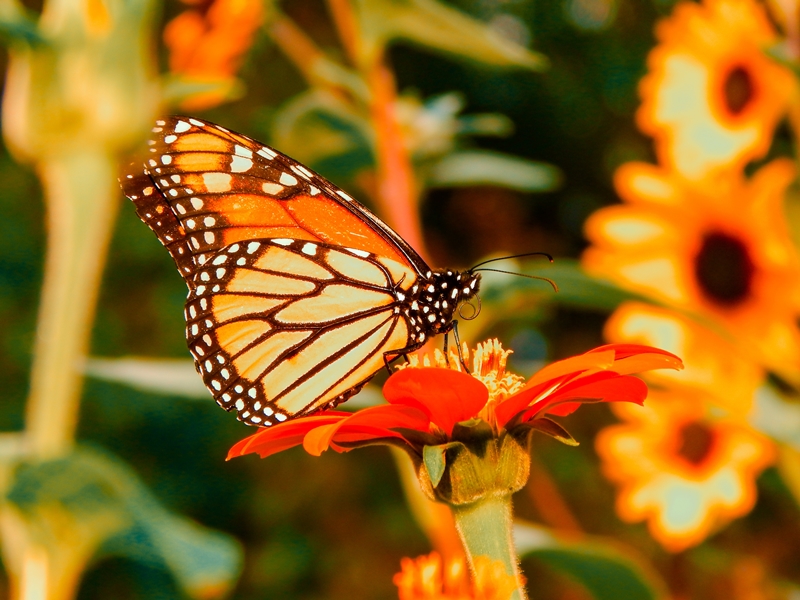By Cristina Goulart (originally published by the Russian River Watershed Association)
Sustainable Solano works to bring organic solutions that take a whole-systems approach to how we interact with the environment. That means encouraging the use of techniques that work with and support natural systems, which includes supporting those beneficial insects people love to attract to their gardens. These insects serve many roles, including pollinating plants and eating harmful insects. We wanted to share this blog post from Cristina Goulart of GHD, who works with us on the Urban Water Conservation Committee, to highlight the importance of protecting our beneficial insects through the choices we make — including making the conscious decision to handle weeds or pests in our gardens through methods other than chemicals that have systemic effects on pollinators. The UWCC is monthly meeting of Solano County Water Agency and city staff with the purpose of coordinating regional conservation programs throughout the county.
This article below was originally published by the Russian River Watershed Alliance. Some of the resources listed are for Sonoma County, but can serve as a helpful guide here in Solano.
The Monarch Butterfly
One morning last summer, as I watched a pair of butterflies flying from bloom to bloom on a butterfly bush, I realized I hadn’t seen a Monarch Butterfly in years. I did some research and learned some distressing news.
In January of 2019, the Xerces Society’s yearly census of the western monarch revealed that the numbers of Western Monarchs were down a dramatic 86% from just one year before. Scientists studying the Western Monarch predict that if we don’t take drastic measures now, the species has a 72% chance of going extinct in less than 20 years.
Monarchs are migratory wonders of nature, migrating up to 3,000 miles to their wintering grounds. Their miraculous migration occurs over generations, one generation communicating to the next the route it must take. Like all butterflies, they are pollinators, drinking nectar from one flower, and depositing its pollen on the next.
Honeybees
The honeybee pollinates about one-third of our food crops. Honeybees have also been in decline for years with the current population of honeybees estimated at less than half what it was in the 1940s. In 2006, scientists discovered what they call Colony Collapse Disorder. Colony Collapse Disorder occurs when a colony’s worker bee population suddenly disappears. Hives cannot survive without their worker bees, so eventually, the entire hive dies.
The Causes
For Monarch butterflies, loss of habitat is a key cause for its population decline. For both the Monarchs and honeybees, the use of pesticides is another key factor.
Pesticides in the neonicotinoid (a systemic agricultural insecticide resembling nicotine) category are thought to be a culprit in Colony Collapse Disorder. Studies have shown that in non-lethal doses, neonicotinoids cause navigation disruption and memory loss in bees, even in low concentrations. These pesticides are found in our food sources and in our home gardens. A demoralizing study conducted in 2014 found that 50% of nursery plants tested in the U.S. and Canada contained residue of neonicotinoids in concentrations as high as 748 parts per billion (ppb). A dose of 193 ppb can kill a honeybee. A dose of 30 ppb can cause impairments to a bee’s ability to forage and navigate. Plants and seeds purchased to attract butterflies and bees can harm these pollinators if they have been treated with neonicotinoids.
Although some nursery chains have since reduced the numbers of plants on their shelves treated with neonicotinoids, plants containing neonicotinoid residue are still sold in retail nurseries. Typically, they do not come with a warning label.
A Call to Action – Help save the Monarchs and the bees.
Go Organic!
Don’t use pesticides in your gardens. Pesticides include herbicides to kill weeds, insecticides to kill insects and fungicides as well. Most pesticides are non-specific and kill a broad range of species in addition to the pest. Insecticides kill beneficial insects in addition to those that eat our crops. Beneficial insects include those that pollinate our crops, such as bees and butterflies, and predatory insects that eat the plant eating bugs, such as ladybugs and lacewings. Pesticides kill bees and butterflies as well as “bad” bugs.
Purchase neonicotinoid-free plants and seeds. In Sonoma County we have several nurseries that sell organic and neonicotinoid-free landscape plants and seeds. Please ask your nurseries if they can assure you that the plants and seeds they sell you are not treated with neonicotinoids. If they can’t, head over to a locally-owned, sustainability-minded nursery. Also, the RRWA program ‘Our Water, Our World’ (OWOW) helps residents manage their home and garden pests in a way that helps protect our watershed. More information on OWOW can be found at www.rrwatershed.org/project/our-water-our-world.
Build it and They Will Come
Create a Monarch Butterfly Waystation!
Monarch waystations must include the native milkweed plant because this is the only plant where Monarchs will lay their eggs and the only plant that Monarch caterpillars eat. In our region, the best time to plant milkweed seeds is from November to early spring. A waystation must also include nectar plants on which the adult Monarchs can feed. Examples are the butterfly bush, salvias, and Ceonothus.
Monarch Waystations also attract bees! Bees feed on nectar-bearing plants, just as butterflies do.
For more information about creating a Monarch Waystation, please go to: www.monarchwatch.org/waystations
Proper Disposal of Pesticides
When you do go organic, remember to dispose of your unused pesticides through Sonoma County hazardous waste drop off locations. Please go to the following link for more information or call Eco-Desk 707-565-DESK (3375).


